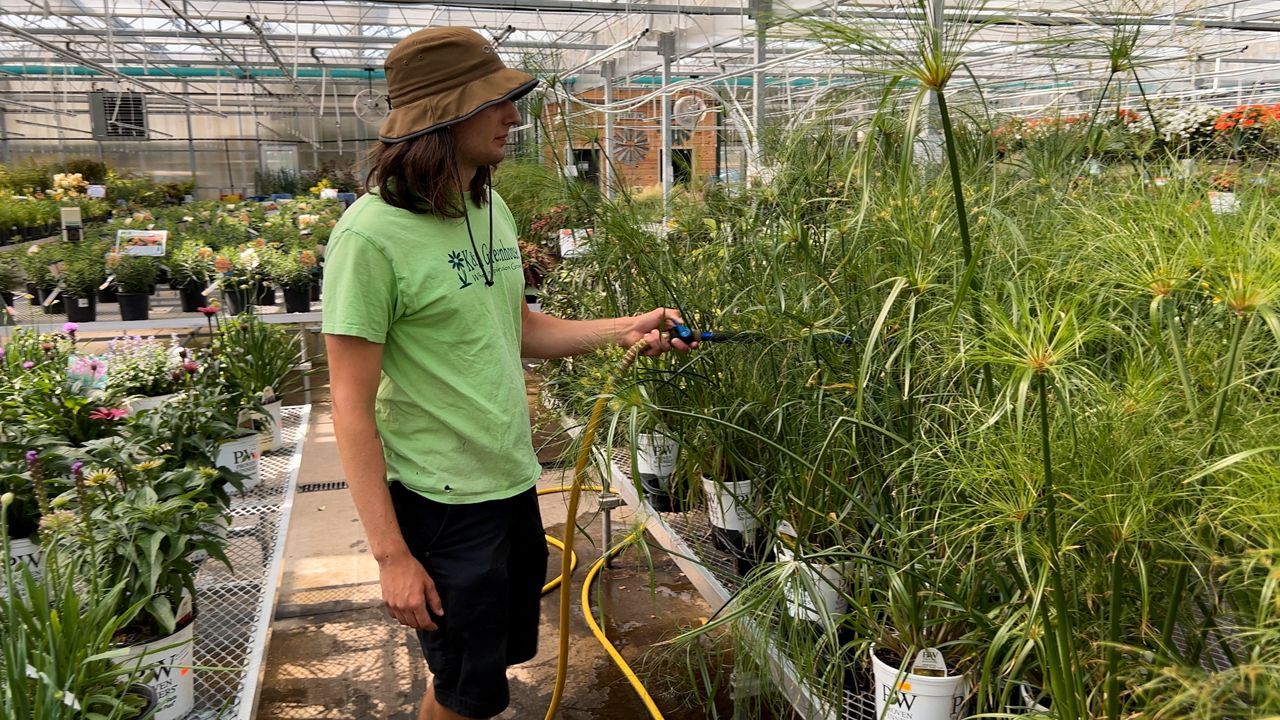MIDDLETON, Wis. — When it comes to the driest areas of Wisconsin, Dane County has been at the top of the list this summer.
Wisconsin is known for its rich soil and agricultural heritage. In fact, agriculture brings in an annual $104.8 billion to the state annually.
That passion for growing fresh produce stretches far beyond large-scale farms as many Wisconsinites often find themselves tending to their gardens during the summer.
Laura Russella works at K&A Greenhouse in Middleton and she said this year her and her team have been watering non-stop.
“In normal years they will water until about 2 p.m. and then keep moving with their day and get other stuff done and now they water until 2 p.m. and just re-water,” said Russella.

Russella said the warm dry weather has not slowed down business at all but it has changed what customers are spending money on.
“More than in previous years we have had people come and visit and figure out which plants they want to grow and say that they are going to hold off, or they will be back another time,” said Russella.
There are many plants that can still prosper in drier conditions such as Aster, Beardtongue or Blue Fescue.
Russella said even drought-resistant plants can have problems during drier conditions.
“Even a drought resistant plant needs help to get established,” said Russella. “Baptisha or False Indigo is a native plant that grows in Wisconsin. It is a plant that is really wonderfully drought resistant, but until it has a root system that can resist drought, it is not drought resistant.”
This year Russella and her crew are making sure customers leave knowing that they will have to water many of their plants twice as much.
“We’re telling people to water every other day and in general if you think you are watering enough, you are probably not watering enough,” said Russella.
Seedlings, cuttings and young plants should be top priorities when it comes to watering, plus anything that has been recently planted.
Anything planted in a greenhouse or conservatory will also be in need of a lot of water.
Russella said it is also important to remember when humans suffer from a drought, so do animals and because of that, rabbits and deer may feast a little more than normal.
“A lot of the plants that are absolute safe bets, rabbits are not interested in them at all, are things that this year, because they are really thirsty, rabbits are eating because they are looking for moisture too,” said Russella.
Besides choosing drought-tolerant plants or providing plants with a sufficient amount of water, gardeners can:
Conserve rainwater for later use
Cover trees, shrubs and gardens with a mulch bed (mulching helps to reduce soil moisture loss through evaporation)










